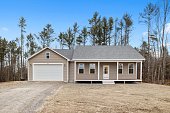The Evolution of Light Steel Frame Technology Over the Decades
페이지 정보
작성자 Quinn Butterfie… 작성일 25-09-24 12:19 조회 3 댓글 0본문

Light steel frame technology has made remarkable progress since its first emergence in the mid 20th century. First introduced as a modern substitute to conventional timber construction, it was first used in small residential projects and short-term dwellings. The first iterations were held back by the supply of industrial-grade coated steel and rudimentary fabrication methods. Builders were reluctant to use it due to worries about structural integrity in harsh climates.
In the late 20th century, improvements in steel science and protective finishes dramatically enhanced the rust protection of light steel systems. Mass-produced steel parts became increasingly accurate, allowing for faster assembly and fewer errors. This period also saw the adoption of standardized design codes that gave architects and contractors the certainty to use light steel frames for expanded applications including apartment complexes and retail spaces.
During the 90s, CAM systems played a pivotal role in revolutionizing construction. Digital modeling allowed for intricate layouts to be analyzed remotely before fabrication commenced. Modular wall systems and pre-assembled flooring became ubiquitous, reducing build schedules and on-site wages. At the same time, sustainability concerns grew, and builders began to recognize the benefits of steel as a circular building component with a lower carbon footprint over its entire service life compared to non-renewable wood.
The 2000–2010 era brought unprecedented advancements. Advanced alloy steels were introduced, ال اس اف allowing thinner profiles to withstand greater stress. Tight coupling of thermal envelopes and exterior finishes became effortless, leading to high-performance facades. Prefab building techniques using steel framing systems gained popularity in areas experiencing supply gaps and skilled trade deficits.
Today, light steel frame technology is a foundation of contemporary building practices. It is used globally in applications ranging from standalone residences to tall residential towers. Advances in automation have made fabrication even faster. Smart sensors built into steel elements can now detect stress patterns in instantly. Environmental responsibility has become a key driver with many manufacturers offering products made from recycled content and designed for modular reuse.
The development of cold-formed steel systems reflects broader trends in production methods, environmental stewardship, and technological integration. Originally conceived as a specialized option has become a dependable, scalable, and data-driven solution for building the homes and structures of the future.
- 이전글 10 Undeniable Reasons People Hate Buy A Driver's License Online
- 다음글 첫충렉스주소드리밍투★당장룰라.com★플레이홀덤오케이벳알파
댓글목록 0
등록된 댓글이 없습니다.

